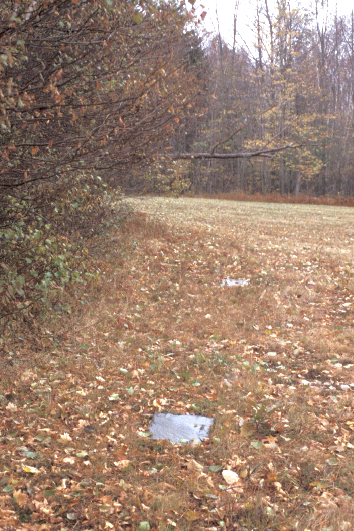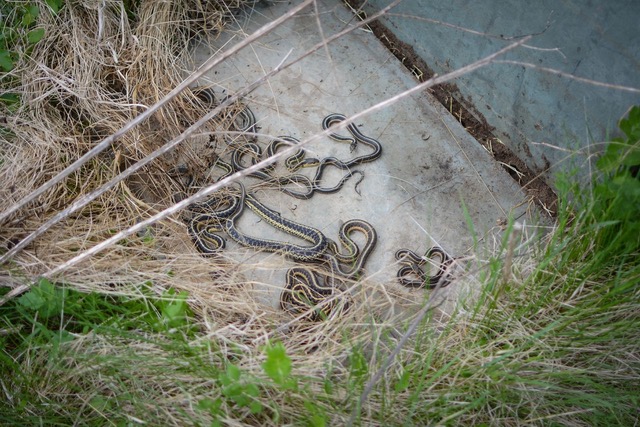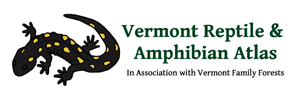
Herp Update: Still moving, annual report – October 11, 2023
Amphibians still on the move
During last Saturday night’s rain, my wife Kris and I headed out to our local amphibian crossing (Morgan Road) for a quick look at amphibians coming out of the Leicester River swamp and heading to their upland overwinter locations. We only spent twenty minutes walking through the crossing area but we tallied 22 amphibians of five species in that short time: Wood Frog (5), Four-toed Salamander (6), Spotted Salamander (3), Blue-spotted Salamander Group (1) and Eastern Red-backed Salamander (7). They are harder to see at this time of year as a result of all the leaves and twigs that are on the road surface, but if you walk slowly and use a bright flashlight you can still find them. They will continue to be moving uphill on warm rainy nights for the next few weeks. You should check out a likely migration location near you.
Snakes still on the move

Dekay’s Brownsnake. Photo by Nick Tepper and used with permission.
We monitor the snake population at a study site in Lincoln, Vermont. We use a series of slate covers (45) that we put out over twenty years ago, as well as three snake hotels (see photos) that we added last year. Over the years we have found Common Gartersnakes, Red-bellied Snakes, Eastern Milksnakes, and DeKay’s Brownsnakes using the monitoring site. Interestingly, DeKay’s Brownsnakes (see photo by Nick Tepper, right) showed up for the first time in 2019, and we have found them every year since. It is possible that the warming climate helped this species move up from its normal haunts in the Lake Champlain Basin to the mountain town of Lincoln.
On our most recent visit last Thursday, October 5, we found nine snakes of only two species (Common Gartersnake and Red-bellied Snake) using the artificial cover we have provided. On previous weekly checks we had been finding over 30 snakes each time. They are clearly moving to denning locations. Watch the roads for snakes moving on the next sunny day and please do keep your camera ready to document what you find.
Annual Report
At this time of year we are required to provide a report of our activities and results for our Vermont Fish and Wildlife State Wildlife Grant. I will provide you with different paragraphs from that report in the next few updates, so that you can also see what we have been up to.
Contributed records
From October 1, 2022 through September 30, 2023; 824 contributors (555 contributing for the first time) provided 3,638 new records that were entered into the Vermont Reptile and Amphibian Atlas Database. This brings the total number of reports entered to almost 122,000.
Sightings during this period came from 217 towns, cities, grants, and gores and all Vermont counties. They included all of Vermont’s native species except Boreal Chorus Frog (probably extirpated from Vermont, last reported in 1999). We received and entered two old (1852 & 1980) reports of North American Racers, but we have not received any well-documented reports of this species since 2014.
Over the past year, we have entered 29 new reports of S1* species, 206 reports of S2 species, 293 reports of S3 species, 167 new reports of S4 species, and 2,537 reports of S5 species. In addition, we have added negative reports (unsuccessful searches), unverified reports, reports of significant crossing areas, reports of significant herptile habitat, and data from long-term monitoring sights into our database.
Species are given a ranking of how rare they are in each state. The scale runs from S1 (rarest) to S5 (most common).

Snake Covers

Gartersnakes revealed by lifting a snake cover. Photo by Tom Rogers and used with permission.

A snake hotel. Photo by Linda Andrews and used with permission.

